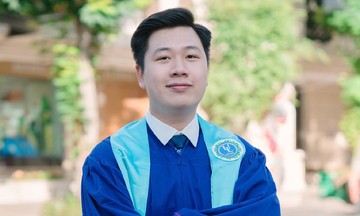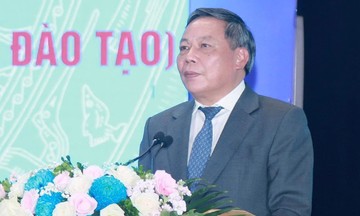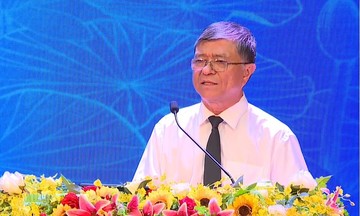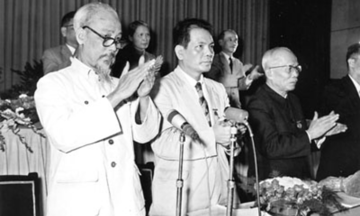31-year-old Dao Tuan Anh is a researcher at the Center for High Performance Computing at the KTH Royal Institute of Technology in Sweden. KTH is Sweden's largest technical university and ranks 78th globally, according to the 2026 QS World University Rankings.
He earned his doctorate in scientific computing from Uppsala University last September. There, he and his two doctoral advisors successfully solved a complex problem used in simulating nuclear fusion reactors. The research results were published in the Journal of Computational Physics, a renowned Q1 journal in the field of physical systems simulation. Tuan Anh was the lead author.
"I'm overjoyed. I couldn't believe that finding a solution to this problem actually became a reality. This achievement brings my doctoral journey to a satisfying conclusion," he said.
Six years ago, Tuan Anh graduated with a master's degree in computer science from Uppsala University with a near-perfect GPA of 4.95/5.
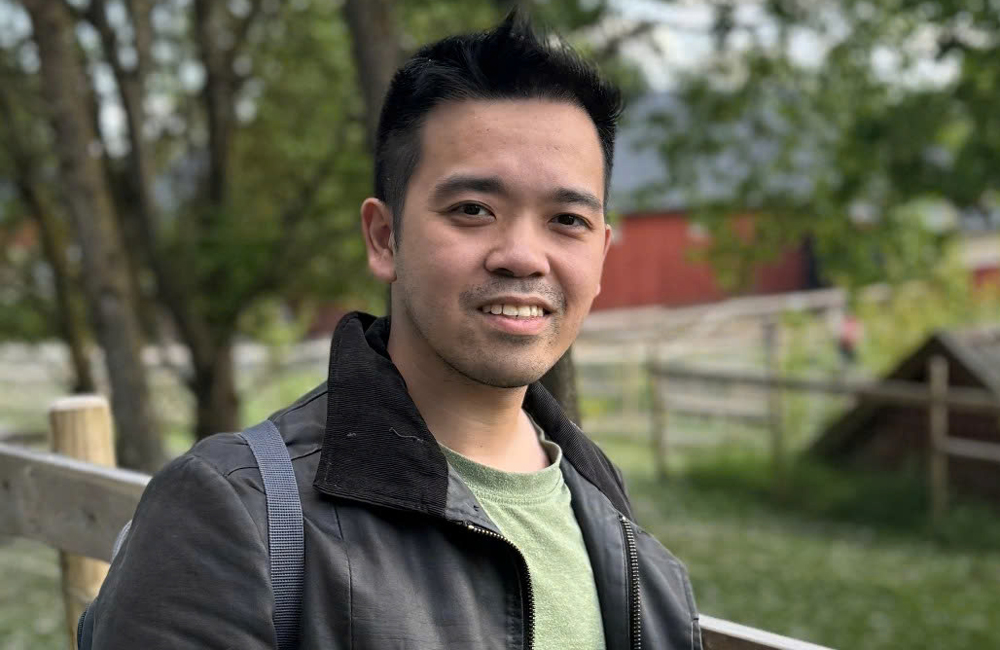 |
Dr. Dao Tuan Anh. Photo: Provided by the subject |
Dr. Dao Tuan Anh. Photo: Provided by the subject
Tuan Anh says his mother was the most influential person in his study abroad journey. She worked at the Swedish Embassy for over 20 years, giving him opportunities to learn about Swedish culture and education, and meet many Vietnamese students who had received scholarships. Encouraged by his mother to explore the world, Tuan Anh nurtured the dream of studying abroad from an early age.
However, undergraduate scholarships from Sweden were scarce. Tuan Anh pursued a degree in mathematics and computer science in the Talented Engineer Program at Hanoi University of Science and Technology before applying for a master's program in 2017.
He explained that in Sweden, doctoral students don't propose their own research topics but follow the guidance of their professors. His advisor, Professor Murtazo Nazarov from the Department of Information Technology at Uppsala University, had long been interested in nuclear fusion research and solving this particular problem.
Professor Nazarov supervised Tuan Anh for both his master's and doctoral theses. According to him, his student contributed to solving an extremely difficult problem in fusion modeling, one that scientists have been trying to crack for over 60 years.
He explained that fusion energy is generated by heating plasma to extremely high temperatures, exceeding 100 million degrees Celsius, inside a reactor. Controlling this superheated plasma is one of the greatest challenges, requiring very complex experimental systems.
The problem his team tackled was developing an algorithm to simulate the fusion process while maintaining essential physical properties. In this process, Tuan Anh found a special method based on finite element methods (FEM) to approximate solutions for partial differential equations (PDEs) commonly encountered in engineering and physics, thereby contributing to solving the problem. This method can simulate plasma behavior with high accuracy, helping to design reactors reliably and cost-effectively.
"Tuan Anh's work is a significant step forward in this challenging research field," Professor Nazarov commented, noting his impression of the young Vietnamese man's deep understanding of mathematics and computational programming skills.
The team is currently collaborating with fusion laboratories in Europe to apply this method in their simulation tools.
Tuan Anh acknowledges that the problem he and his professor sought to solve represents the difficult aspects of computer science and physics. Before achieving results, he continuously programmed, experimented, and processed data in various ways, experiencing numerous failures and false hopes. He explains that in the field of physics simulation, sometimes theoretical results don't hold true in practice. The reason could be programming errors or incorrect theoretical analysis. If the programming is incorrect, he can trace the source code, but if the theoretical analysis is flawed, months of work can be wasted.
"Discouragement was frequent, but in my final year of doctoral studies, I tried my best," he said, explaining that he programmed day and night for a month, finally producing results that matched the theory.
During this time, he was also the lead author of six publications in Q1 journals such as the Journal of Scientific Computing, SIAM Journal on Applied Mathematics, and Computer Methods in Applied Mechanics and Engineering.
Tuan Anh currently works at KTH while also managing a company in Vietnam. He hopes to gain more experience and leadership skills to build a career in information technology development and contribute to his country.
Binh Minh



